Four Weeks in Madre de Dios, Peru
February 12, 2019

By Tatiana Manidis (Master of Environmental Management ’19)
In December 2018, I had the opportunity to travel to Madre de Dios, Peru, as a member of the Environmental Epidemiology in Latin America: Impacts of Artisanal Gold Mining in the Peruvian Amazon project team.
Madre de Dios is considered one of the most active biodiversity areas in the world, containing 15 percent of Peru’s forested area within its 85,301 square kilometers. However, this biodiversity is threatened by the increasing rate of deforestation, land degradation and pollution to air and water associated with gold mining, which has increased rapidly in the region due to rising gold prices.
Artisanal and Small-scale Gold Mining (ASGM) on the Madre de Dios
Between 2006 and 2015, unregistered and informal (illegal) mining in Madre de Dios increased by 540 percent, and now roughly 20-25 percent of the region’s total population consists of gold miners. To extract the gold, miners use mercury, which is then emitted into the air when the amalgam is burned or released into the waterways during extraction.
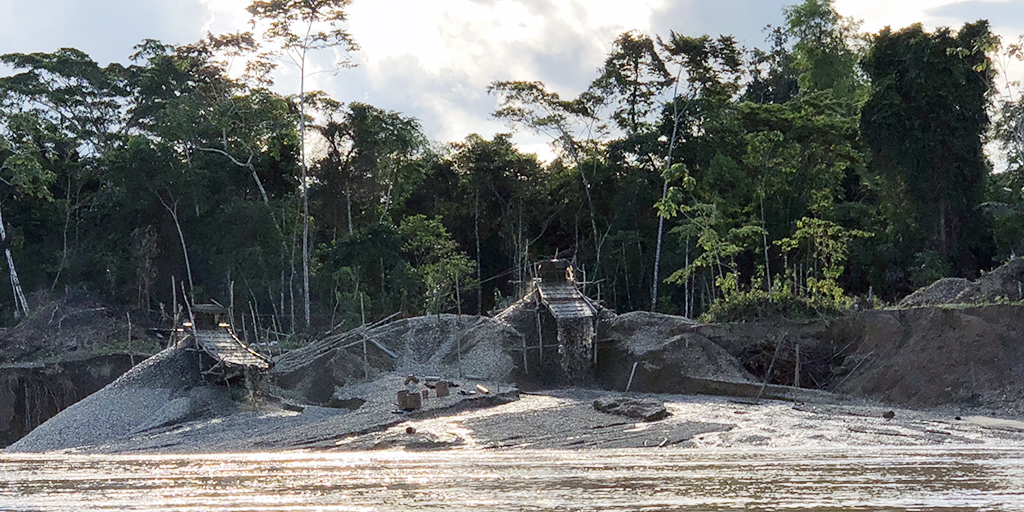
An estimated 30-40 tons of mercury are released into the waterways annually. In aquatic environments, mercury undergoes methylation and enters the food chain where it ends up in humans who consume mercury-contaminated fish.
There have been numerous studies investigating the levels of mercury in the people of this region. One study reported the highest human hair mercury concentrations in Boca Manu, a community roughly 75 kilometers upstream of active mining. The results from this study are what sparked this Bass Connections project, which is being co-led by Jackie Gerson, a Ph.D. candidate in Ecology at Duke.
In order to understand how people upstream of mining are being exposed to high levels of mercury, we need to better understand the fate and transport of mercury in the environment. Therefore, Jackie and I spent four weeks in Madre de Dios collecting environmental samples of river water, rainwater, soils, sediments, leaves and tree cores. Our sampling journey began in Laberinto and took us upstream to Boca Manu. Besides our time on the river, Boca Manu is where I spent the majority of my time in Madre de Dios.
The Joys and Challenges of Boca Manu
We arrived in Boca Manu on December 25. According to our sampling schedule, the latest possible date we could stay in Boca Manu before heading back down the river to collect our samples, break down our sites and head home was January 5. However, we figured that since we were in the rainforest during the rainy season, two or three nights would be enough time for our rainwater collectors at our Boca Manu site to fill.
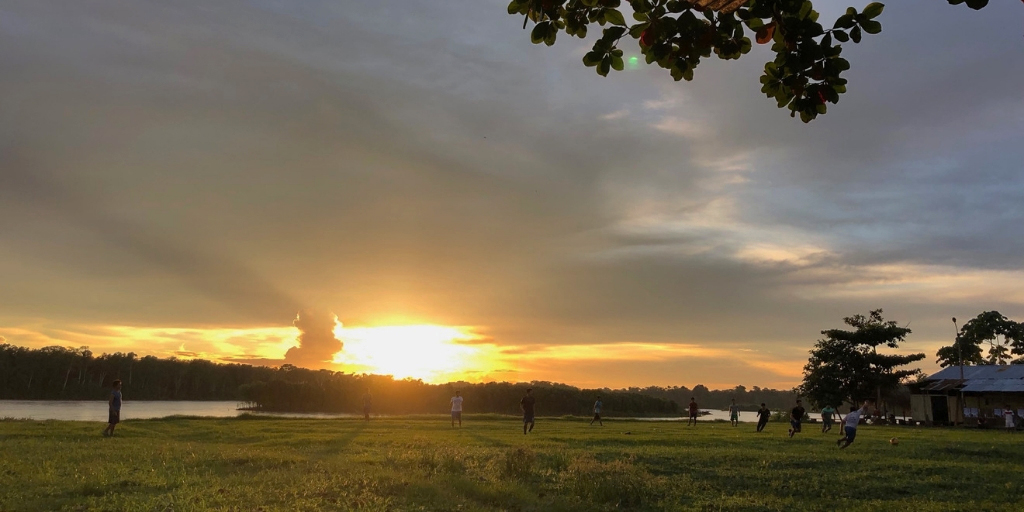
Boy, were we wrong. We ended up waiting in Boca Manu for rain for 11 days. It did not rain until January 4. Lucky for us, it rained hard all day, so we had enough rain when we had to leave the next day.
Unfortunately, no rain meant no break in the summer heat, which was only exacerbated by the long pants and long sleeves I had to continue wearing to protect myself from the biting bugs. I have never seen so many mosquitoes in all my life.
It is no exaggeration when I say that hundreds of mosquitoes would swarm us in the jungle when we were setting up our sites. I could see them trailing behind the person walking in front of me, eager for them to stand still. No part of the body was safe. If you revealed even a slither of skin between your glove and sleeve, they would find it.
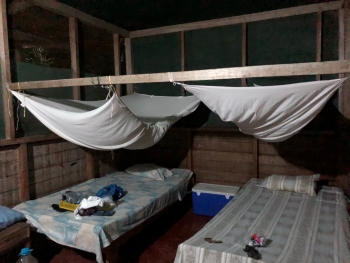
In the riverside town of Boca Manu, the number of mosquitoes did not rival the number in the jungle, but it did rival the number of people. When I asked the locals how many people lived in Boca Manu, they told me 40 families. The only population figures I could find online were for 1993, which reported 63 habitants.
Although Boca Manu is fairly remote, it is located between three protected areas: Manu National Park to the west, the Los Amigos conservation concession to the east and the Amarakaeri Communal Reserve to the south. Its location makes it an ideal stop for tourists during travel, and therefore accommodation is available for rent. However, during the 11 days I was there, only one family (from New Zealand) stopped in Boca Manu to buy drinks and groceries and then were on their way. However, it may be busier during the tourism season, which is from April/May through September/October.
During our time in Boca Manu, we stayed in one of the five cabins the abuela, or “grandmother” in Spanish, had for rent. I called her abuela because that seems to be what everyone in town calls her, abuela or abuelita. As a matter of fact, I never learned what her real name was.
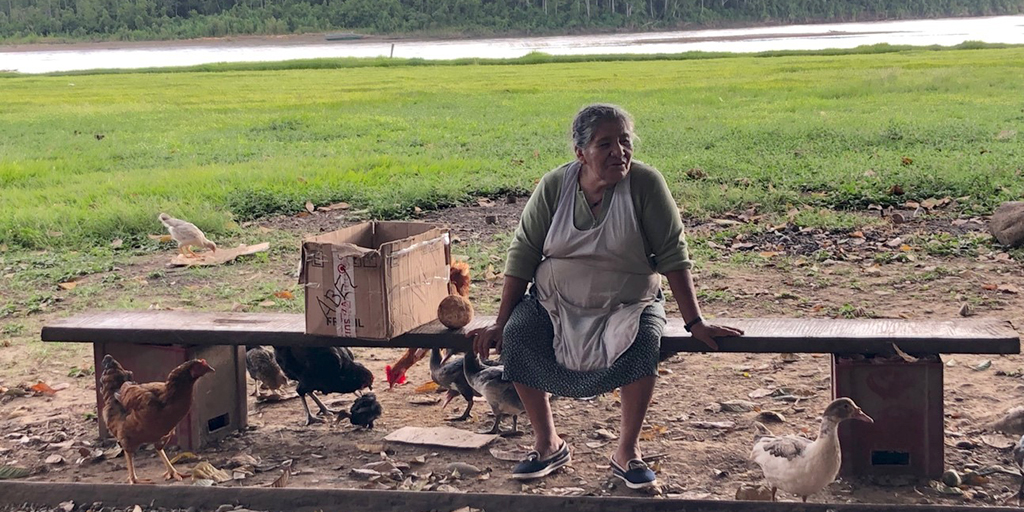
She knew my name but called me nieta, which means granddaughter in Spanish. I think this may have been something she did with most young people, but it really emphasized the feeling of community that existed in Boca Manu. Everyone knew everyone, and everyone was willing to help one another out. It was the people of Boca Manu that made the long, hot and humid days waiting for rain bearable.
Besides a trip to the health post for what seemed to be an infected bite, there was not much variation in my days. We ate every breakfast, lunch and dinner at the same place. It was the only place to eat, really, and was part restaurant, part shop run by one family.
The food was delicious but without much variation. Every meal consisted of three parts: a starter – typically a vegetable or barley soup, a main dish and either a refresco (a sugary drink) or dessert. The main dish was normally a mountain of white rice, a protein (usually chicken) and some other starch like potato, yucca or plantain. I was surprised by the amount of food local residents ate in Madre de Dios. I had assumed because the area was more poor and remote, food supply would be scarce, but I was wrong, again.
Outside of meals, I spent the majority of my time with the locals or writing in my journal. I would sit at the same table outside the abuela’s store every day to write. In the evenings, locals would come play soccer in the field out in front of her store.

In Boca Manu, birds ruled the roost. The community was overrun with ducks, hens and roosters. I had a particular problem with the roosters, who would begin calling loudly as early as 3 a.m. Abuela had recently gotten 13 new chicks to add to the feathered community that she would let roam outside of her storefront. Every day, I would sit and talk to her while we watched them, and then I would help her catch them all to bring back inside.
Every evening, I would watch soap operas with the local girl, Yaneth, who ran the abuela’s store. If it was a weeknight, we would watch two soaps back-to-back: Huérfanas (“orphans”) at 6pm and Kara Para Aşk (“Black Money Love” in Turkish) at 7pm. Interestingly, they were both Turkish television series, which had been dubbed in Spanish. The television was in the upper corner of the store, and like all the other stores, the storefront was open, so locals would come, grab a chair, sit and watch.
Francisco (“Pancho” or “Panchito”), our helmsman, would watch as well, and he became even more invested in the series than I did. I am not sure how old Pancho is, but he is old enough to have a son my age (26) and was quiet and incredibly warm.
Navigating the Madre de Dios
It is amazing how Pancho navigates the river, especially after a rain event when entire trees come barreling downstream. Pancho’s memory is also astounding, remembering not only where all our sites are, but where all the July/August sampling sites were as well.

Every helmsman has an assistant that helps dock and tie up the boat. Pancho’s assistant, Ramiro, would become an extremely integral part of our sampling team. Ramiro helped Jackie and me with all the sampling and did all the most labor-intensive work. For example, he was in charge of the tree cores. The trees we sampled were so incredibly hard that Jackie and I would have been physically incapable of using the manual corer to collect our samples.
Ramiro not only played a key role in our sampling but in our day-to-day lives. He was frequently the middle man when communicating with others, he took us on walks through the forest and he even went with me to the health post.
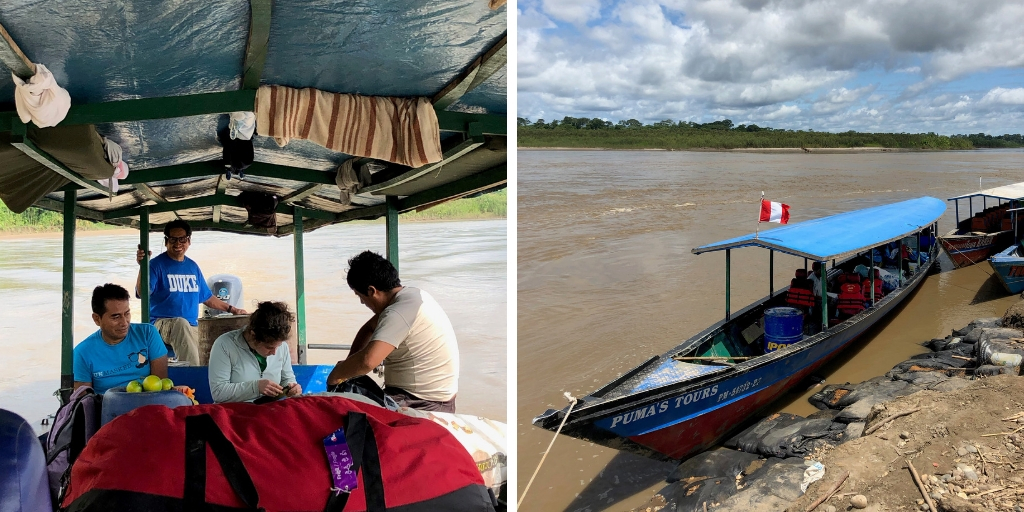
For four weeks, I ate every meal and spent the majority of my days with Pancho and Ramiro. They would become my favorite part of my trip to Madre de Dios, and it was hard to say goodbye. However, I know I will be back in Peru one day and I have their information so will see them again.
I am extremely grateful to Bass Connections for this opportunity and incredible experience. I traveled to a place and did fieldwork that I never would have done if not for this project. Although the Peruvian Amazon, with its unrelenting heat, humidity and biting insects, was not kind to me, the people were, and I will miss them terribly. I will miss the boat, the wind on my face and the ever-changing yet ever-familiar Madre de Dios river.
Learn More
- Explore this project team, and read more about their experiences in the field and sharing their research with policymakers.
- Find out what this team and others are doing next year, and apply for 2019-2020 project teams by February 15.
- Check out the Bass Connections Student Research Awards and apply by March 1.
